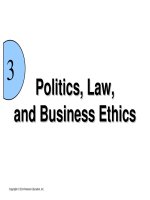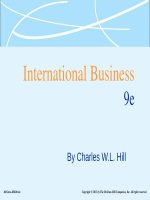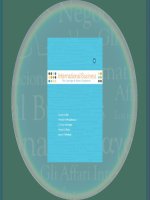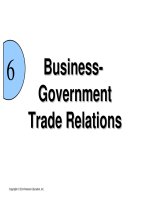Lecture International business - Chapter 6: Business-government trade relations
Bạn đang xem bản rút gọn của tài liệu. Xem và tải ngay bản đầy đủ của tài liệu tại đây (1.19 MB, 32 trang )
����������������������������������������������������������������������������������������������������������������������������������������������������������������������������������������������������������������������������������������������������������������������������������������������������������������������������������������������������������������������������������������������������������������������������������������������������������������������������������������������������������������������������������������������������������������������������������������������������������������������������������������������������������������������������������������������������������������������������������������������������������������������������������������������������������������������������������������������������������������������������������������������������������������������������������������������������������������������������������������������������������������������������������������������������������������������������������������������������������������������������������������������������������������������������������������������������������������������������������������������������������������������������������������������������������������������������������������������������������������������������������������������������������������������������������������������������������������������������������������������������������������������������������������������������������������������������������������������������������������������������������������������������������������������������������������������������������������������������������������������������������������������������������������������������������������������������������������������������������������������������������������������������������������������������������������������������������������������������������������������������������������������������������������������������������������������������������������������������������������������������������������������������������������������������������������������������������������������������������������������������������������������������������������������������������������������������������������������������������������������������������������������������������������������������������������������������������������������������������������������������������������������������������������������������������������������������������������������������������������������������������������������������������������������������������������������������������������������������������������������������������������������������������������������������������������������������������������������������������������������������������������������������������������������������������������������������������������������������������������������������������������������������������������������������������������������������������������������������������������������������������������������������������������������������������������������������������������������������������������������������������������������������������������������������������������������������������������������������������������������������������������������������������������������������������������������������������������������������������������������������������������������������������������������������������������������������������������������������������������������������������������������������������������������������������������������������������������������������������������������������������������������������������������������������������������������������������������������������������������������������������������������������������������������������������������������������������������������������������������������������������������������������������������������������������������������������������������������������������������������������������������������������������������������������������������������������������������������������������������������������������������ne
b. Special quota zone
c. Foreign trade zone
Copyright © 2014 Pearson Education, Inc.
6 - 15
Answer to Discussion Question
A geographic region within
a nation and in which
merchandise passes
through with lower
customs duties or fewer
customs procedures is
called a __________.
a. No subsidy zone
b. Special quota zone
c. Foreign trade zone
Copyright © 2014 Pearson Education, Inc.
6 - 16
Tariffs
Government tax levied as a product enters or leaves a nation
Potential results
Export tariff
+ Protect domestic firms
Transit tariff
from competitors
+ Generate income for the
government
Import tariff
– Reduce competitiveness
of homebased firms
– Raise consumer prices
Copyright © 2014 Pearson Education, Inc.
6 - 17
Import and Export Quotas
Restriction on the amount of a good that can enter
or leave a country during a certain period of time
Import Quotas
Export Quotas
1. Protect domestic producers
1. Retain adequate domestic
2. Force outside firms to
2. Restrict world supply of a
of a good
compete for market access
Copyright © 2014 Pearson Education, Inc.
supply of a product
product to raise its price
6 - 18
How a TariffQuota Works
Copyright © 2014 Pearson Education, Inc.
6 - 19
Embargoes
Complete ban on trade (imports and exports)
in one or more products with a particular country
Most restrictive
nontariff trade
barrier
Copyright © 2014 Pearson Education, Inc.
Often used to
achieve political
goals
Can be difficult
for a nation to
enforce
6 - 20
Local Content Requirements
Laws that domestic market must supply
a specific amount of a product
Forces international companies to
employ local resources in production process
Copyright © 2014 Pearson Education, Inc.
6 - 21
Administrative Delays
Regulatory controls or
bureaucratic rules to slow
imports into a country
Copyright © 2014 Pearson Education, Inc.
Inconvenient ports for imports
Product-damaging inspections
Understaffed customs offices
Lengthy licensing procedures
6 - 22
Currency Controls
Restrictions on the
convertibility of a currency
Limit the amount of
globally accepted
currency available to pay
for imports
Set an unfavorable
exchange rate when
paying for imports
Copyright © 2014 Pearson Education, Inc.
6 - 23
Discussion Question
What are some of
the methods that
governments use
to restrict
international
trade?
Copyright © 2014 Pearson Education, Inc.
6 - 24
Answer Discussion Question
To restrict trade,
governments can use
methods such as
tariffs, quotas,
embargoes, local
content requirements,
administrative delays,
and currency controls.
Copyright © 2014 Pearson Education, Inc.
6 - 25
General Agreement on
Tariffs and Trade (GATT)
Early Success:
• Tariffs down 35%
• Trade up 2,000%
Then Problems:
• Nontariff barriers
• Services left out
Copyright © 2014 Pearson Education, Inc.
6 - 26
Completed Rounds of GATT
Copyright © 2014 Pearson Education, Inc.
6 - 27
Uruguay Negotiations
Improved intellectual property rules
Extended coverage to services
Reduced agriculture barriers
Created World Trade Organization
Copyright © 2014 Pearson Education, Inc.
6 - 28
World Trade Organization (WTO)
Normal trade relations status
Dumping and antidumping
Dispute settlement body
Doha trade talks
Copyright © 2014 Pearson Education, Inc.
6 - 29
Discussion Question
The World Trade
Organization principle that
calls for nondiscrimination
among trading partners is
called __________.
a. Least favored status
b. Normal trade relations
c. Countervailing relations
Copyright © 2014 Pearson Education, Inc.
6 - 30
Answer to Discussion Question
The World Trade
Organization principle that
calls for nondiscrimination
among trading partners is
called __________.
a. Least favored status
b. Normal trade relations
c. Countervailing relations
Copyright © 2014 Pearson Education, Inc.
6 - 31
All rights reserved. No part of this publication may be reproduced,
stored in a retrieval system, or transmitted, in any form or by any
means, electronic, mechanical, photocopying, recording, or
otherwise, without the prior written permission of the publisher.
Printed in the United States of America.
Copyright © 2014 Pearson Education, Inc.
6 - 32









